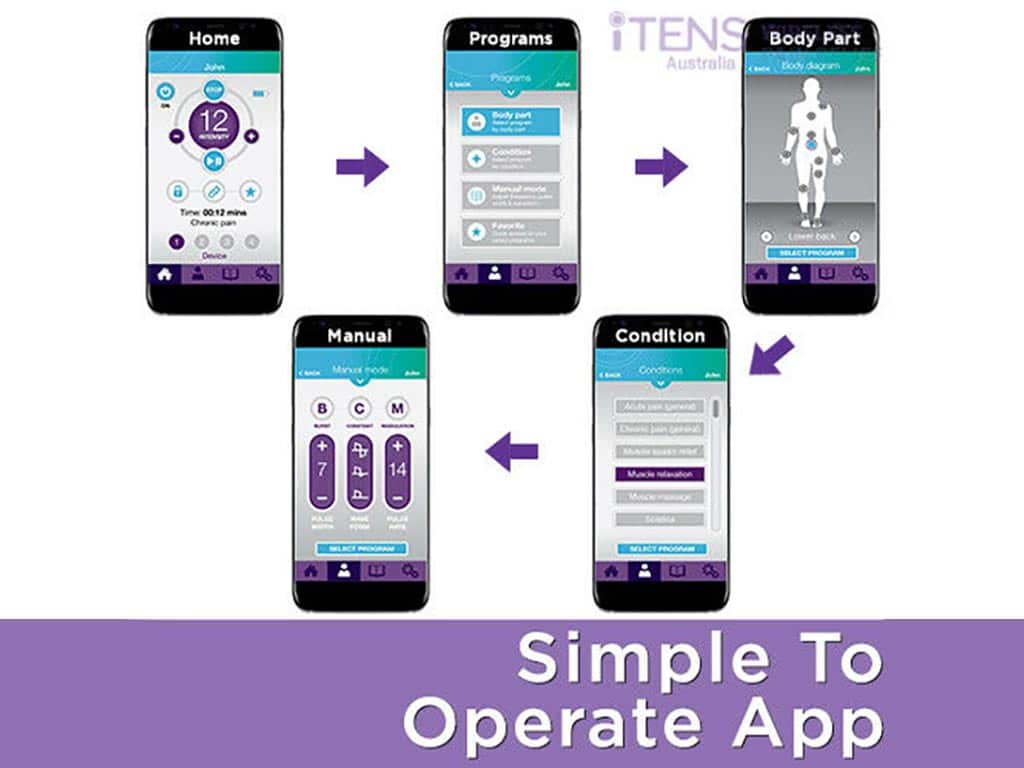
A Transcutaneous Electrical Nerve Stimulation or electrotherapy TENS unit is an electronic device that sends electrical currents to the body. This therapy provides a multitude of benefits. It is non-invasive, drug-free, customisable, and cost-effective. Furthermore, this electrical stimulation works based on the Pain Gate Mechanism and the release of endorphins. Additionally, operating the device is straightforward. Prepare the device, place the electrode patches, adjust the settings, and initiate the stimulation for pain relief.
Different types of pain affect millions of people worldwide. While oral medications can provide temporary relief, they come with a range of potential side effects. As a result, many individuals are turning to alternative methods for pain management, such as TENS therapy electrical devices. It is a promising solution commonly used by pain clinics, health professionals, physical therapists, and individuals. This article will present the benefits of the TENS therapy unit, how it works, and how to operate it.
Benefits of Electrotherapy TENS Unit
The electrotherapy TENS unit offers a multitude of benefits. Firstly, TENS therapy provides a targeted method of pain relief. This allows users to focus the treatment precisely on the area experiencing discomfort. Secondly, TENS treatment is versatile. It can be used to address various types of pain. This adaptability makes it a valuable tool for people with diverse pain management needs.
Thirdly, TENS therapy is non-invasive and drug-free. The TENS unit bypasses the need for injections, incisions, surgical procedures, or pharmaceutical interventions. Fourthly, the customisability of a TENS machine ensures that individuals can tailor the treatment to their specific needs. Users have the flexibility to adjust the pulse rate, pulse intensity, and pulse duration according to their preferences.
Moreover, the cost-effectiveness of TENS makes it an attractive option. It eliminates the recurrent purchases of pharmaceutical products or frequent visits to healthcare providers. Finally, the portability of TENS units allows users to have a convenient form of pain relief. Thus, individuals can integrate TENS therapy into their daily routines. Also, they can use it at home or on the go.
Treatable Conditions
- Acute pain conditions: typically arise suddenly. This may be due to postoperative pain, labour pain, primary dysmenorrhea, or tension headaches.
- Chronic pain: these are conditions that persist over a prolonged period. This may include conditions such as backaches, fibromyalgia, and arthritic pain.
- Neuropathic pain: this results from damage or malfunction of the nervous system. It may involve conditions like diabetic neuropathy, sciatica, and nerve entrapment syndromes.
- Musculoskeletal pain condition: TENS therapy is beneficial for managing ailments like joint pain, osteoarthritis, and rheumatoid arthritis.
- Muscle-related discomfort: TENS treatment is valuable for individuals experiencing sore muscles, achy muscles, and muscle injury.

How an Electrotherapy TENS Unit Works
The electrotherapy TENS unit works through a combination of mechanisms. One key aspect of how TENS therapy operates is the pain gate mechanism. The electrical pulses from TENS can activate sensory nerves, which carry signals. These signals compete with pain signals travelling along the same nerve pathways. Nevertheless, the sensory signals can close the “gate”, preventing the pain messages from reaching the brain.
In addition, TENS devices can stimulate the production of endorphins. The electrical signal from TENS triggers the release of endorphins, the natural painkillers of the body. Endorphins are neurotransmitters that bind to opioid receptors in the brain and spinal cord. Hence, these chemicals can effectively reduce the perception of discomfort and promote a sense of well-being.
TENS therapy also contributes to improved blood circulation. The electric currents from TENS help to stimulate blood flow to the area where the electrodes are placed. Enhanced blood circulation delivers oxygen and nutrients to the body tissues. As a result, this activity can promote healing and reduce inflammation. Overall, TENS treatment works in these mechanisms for natural relief.
Low and High Frequencies
TENS units can operate at low and high frequencies to provide different therapeutic effects. Low-Frequency (LF) TENS therapy typically ranges from 1 to 10 Hz. This frequency range is effective in triggering the release of endorphins. Hence, LF TENS is beneficial for providing lasting relief for chronic and persistent discomfort.
On the other hand, High-Frequency (HF) TENS therapy operates at frequencies ranging from 50 to 120 Hz. This HF range is effective in targeting acute conditions and providing immediate relief. Nevertheless, the rapid and intense stimulation at higher frequencies can help to block pain signals.

How to Operate an Electrotherapy TENS Unit
Operating an electrotherapy TENS unit is straightforward. Start by ensuring that the TENS unit is turned off. Then, connect the electrode pads to the central machine using lead wires or to a smartphone via Bluetooth for wireless. After preparing the device, identify the part of the body experiencing pain and prepare the skin over it. Next, apply the electrode patches, following the proper electrode placement.
Once the pads are in place, turn on the TENS device. Many TENS units have control buttons that allow users to adjust the settings (frequency, intensity, and duration of the electrical pulses). Also, some advanced models have pre-set programs. This enables people to target a specific condition directly. Nevertheless, start with a low setting and moderately increase it to a comfortable level.
After the settings are adjusted, initiate the electrical stimulation. This may deliver tingling or buzzing sensations. During the therapy, monitor the responses of the body. The duration of the session may last between 15 to 30 minutes. When the session is complete, turn off the TENS unit and carefully remove the electrodes. Some have auto-shutoff features, while others may require manual shutdown.
Safety Considerations
Before using a TEN unit, individuals should consult with a healthcare professional. This is particularly essential for individuals with certain medical conditions, such as epilepsy or heart problems. Subsequently, users should carefully follow the instructions provided by the manufacturer or health professional when placing the electrode pads on the skin.
Additionally, do not place the pads on the head, eyes, mouth, throat, chest, bony regions, or broken skin. Moreover, users should be aware of their sensations during therapy. Any sharp or burning sensation should be reported to a medical professional. Do not use TENS while driving, operating machinery, or in contact with water.
Conclusion
In summary, the use of electrotherapy TENS units has proven to be highly valuable for a variety of individuals. It is a device that delivers electrical currents to the body as a method of pain relief. Furthermore, TENS therapy provides a multitude of benefits. It is versatile, non-invasive, drug-free, customisable, cost-effective, portable, and gives targeted relief. Also, TENS devices can treat various conditions. This may include postoperative pain, backaches, sciatica, osteoarthritis, and sore muscles.
Nevertheless, TENS electrotherapy disrupts the transmission of pain messages. Also, it triggers the production of endorphins and enhances blood flow. Additionally, the electrical pulses can stream in high and low frequencies. Operating the TENS device is straightforward. One must prepare the unit. Then, locate the treatment area and prepare the skin. Finally, place the electrode patches and adjust the settings. However, knowing the safety considerations is vital for effective TENS therapy.




















